I’ve often thought about how my time in Paris, as short as it was, managed to change me. And it seems I can’t stop thinking about the change Paris may have had on other artists, other women, in other times.
I’ve taken a look at some of their lives to see if I can spot the power of Paris. American portrait painter Cecilia Beaux (1855-1942), who lived and studied in Paris in 1888-89, makes a great example.

Celia Beaux, Self Portrait (1894)
Maybe you don’t know much about Cecilia Beaux, but she has some pretty amazing paintings at the Art Institute of Chicago, Metropolitan Museum of New York, or my favorite, Sita and Sarita at Musée d’Orsay.
Most people know her, if they know her at all, because William Merritt Chase called her “the greatest woman artist who has ever lived.” I’ve previously written about her struggle to obtain an art education in Philadelphia during the Victorian era. But what interests me the most is her time in Paris.
When Beaux took her shot to study in Paris, it seems like it changed her life. She only spent a year and a half there, but when she returned home to the States in 1889 her career really took off. True, she was no slouch before Paris – she’d already studied for over a decade, worked as a professional and received numerous awards. She’d already had a painting accepted in the Paris Salon of 1887.
So here is Beaux before Paris:
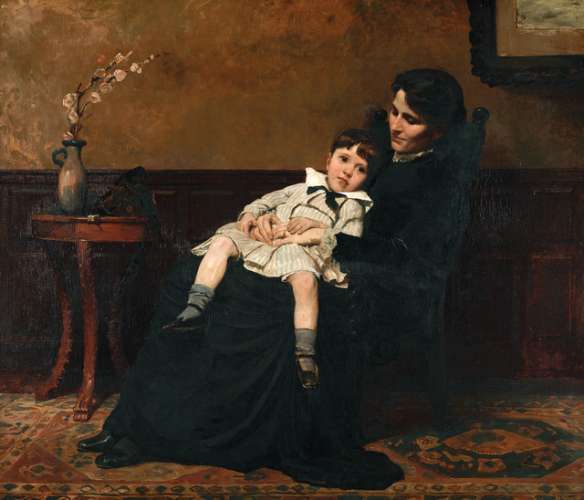
Cecilia Beaux, Les Derniers Jours D’Enfance (1883-85), oil on canvas, Pennsylvania Academy of Fine Arts, Philadelphia, Pennsylvania. This painting was awarded the PAFA Mary Smith Prize for best work by a local woman and was accepted into the 1887 Paris Salon. According to PAFA, Beaux considered this to be “a coup” that marked “a turning point in her career.”
And this is Beaux after Paris:

Cecilia Beaux, New England Woman (1895), oil on canvas, Pennsylvania Academy of Fine Arts, Philadelphia, Pennsylvania
Isn’t the difference stunning? It’s as if she moved from one century to another.
And the difference wasn’t just in the vibrant new light in her portraits. As successful as Beaux was before Paris, her output of high profile portraits soared upon her return. She completed over 40 portraits in five years, including some of the most remarkable of her career. By 1895, Beaux was hired to be the first full-time female faculty member of the Pennsylvania Academy of Arts, becoming the Head of Portraits.
If Paris did indeed spark Beaux’s success in the 1890s, what was it? The training in the Paris ateliers? The exposure to and networking with other artists? The chance to study from the masters in the Louvre? The experience of freedom as a traveler, an outsider and an expatriate? Or maybe it’s just in the air in Paris.
Before I set out to walk in Beaux’s footsteps through Paris I decided to read her autobiography, Background With Figures (1930). I wanted to hear her Paris stories in her own voice and her own words. I was surprised how much I enjoyed the time I spent reading her book – she had a wicked sense of humor and a masterful ability to walk the fine line between truth and discretion. Here was a woman who had seen and achieved a great deal at a time when women of her social background weren’t really supposed to.
Beaux is at her best when she tells the story behind her first trip to France. She had long dreamed of studying art in Paris. All the serious American art students were going. But Beaux had an additional, more personal draw: she was half French and was ready to claim her father’s heritage as part of her own. Once her first painting (Les Derniers Jours D’Enfance) was accepted at the Paris Salon of 1887, it seemed as though she’d earned the right to go.
But she couldn’t go alone. In spite of the fact that she was 33 years old and had been studying and practicing art for over 17 years, she still wouldn’t travel to Europe without a female companion. Beaux was no rebel; she wouldn’t be breaking the social code that her fine Philadelphia family still observed.
And so it was that Cecilia Beaux and her cousin May Whitlock arrived in Paris in a miserably cold January in 1888 and moved into an underwhelming pension at 12 rue Boccador, on the right bank between the Seine and the Champs-Élysée. Today this address would be considered one of the nicest in Paris, in the middle of the Triangle d’Or and just off of the incredibly expensive Avenue Montaigne. But in 1888 it was another story. Beaux described it in her autobiography with biting wit:
Our pension was in the quarter of the Pont de l’Alma, but not near to the river and its beauty. All that a skimping French pension could mean in mid-winter was ours. . . . I had never known the damp, penetrating chill of never-heated houses in winter. . . . Until May, we never saw the sun.
Beaux’s art training had developed her talent for looking at faces and recognizing the traits and quirks that nail a likeness, whether in pictures or words:
Mdlle. de Villeneuve, our keeper, bore her considerable years, which had borne much skimping too, under a brown wig and a long nose. She carried Fi-Fi, a tiny, old dog, with rattling teeth and a cracked bark, constantly under her arm. She had bony fingers, and for the first time I heard the rattle, also, of keys.
The visit of our blanchisseuse was one of our pleasures. She had apparently been forgotten in the gathering at the Judgment Seat of the Tricoteuses, left over from the Terror. She was huge, had an immense head with bold pompadour, and a beard.
Isn’t Beaux hilarious? Can you imagine how entertaining she was in person? A bit like another one of my favorites, Alice Roosevelt Longworth.
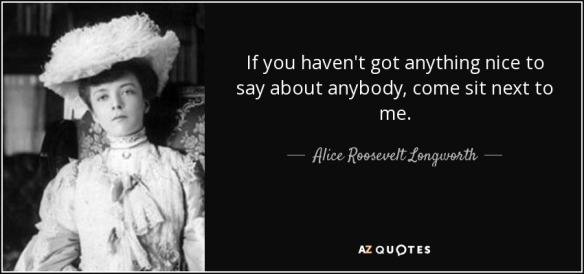 Together, Beaux and her cousin investigated the different private art studios open to women (L’´Ecole de Beaux Arts would not accept women for ten more years, in 1897) and chose the Académie Julien’s right bank studio at 28 rue de Faubourg. (This atelier would close at the end of the 1888 season and move to 5 rue de Berri, another address in the aristocratic part of the right bank. Also, I am following Beaux’s spelling here rather than the usual Académie “Julian.”) The Académie Julien was at the time the largest art school in Paris with over 17 locations, 7 of which were devoted to women. Beaux quickly learned that the rue de Faubourg location, housed in an attic near the Madeleine, was more for diletanttes than serious art students.
Together, Beaux and her cousin investigated the different private art studios open to women (L’´Ecole de Beaux Arts would not accept women for ten more years, in 1897) and chose the Académie Julien’s right bank studio at 28 rue de Faubourg. (This atelier would close at the end of the 1888 season and move to 5 rue de Berri, another address in the aristocratic part of the right bank. Also, I am following Beaux’s spelling here rather than the usual Académie “Julian.”) The Académie Julien was at the time the largest art school in Paris with over 17 locations, 7 of which were devoted to women. Beaux quickly learned that the rue de Faubourg location, housed in an attic near the Madeleine, was more for diletanttes than serious art students.
In spite of the relishable novelty of the cours, and the new world I had expected and found, in the Life-Class, I had to sustain a grand déception. More even than on the instruction, I had counted on an association of superiority.
I had worked alone, and fully believe that, in Paris, I should be among brilliant and advanced students, far ahead of a practically untaught American. I was to learn that the Académie Julien was a business enterprise, and could not be maintained for gifted students only. The personnel was heterogeneous (pp. 117-18).
“The personnel was heterogeneous.” I can just picture Beaux saying that with a wicked little twist of her eyebrow. It turns out Beaux was disappointed with her fellow students’ level of talent, the instructors’ level of input and the overcrowded classrooms. The famous instructors came in to criticize only once a week, and when they did they rarely spent time demonstrating or analyzing the student work. Instead, they would go around the class with comments like pas mal and a reserved smile. Each class was filled to capacity. Punctuality was key or you wouldn’t get an easel close to the model. Beaux gave up the painting class and concentrated on nothing but drawing because she found it too frustrating to try to paint without enough elbow room.
Beaux had some limited praise for “the English girls” who came to study at Académie Julien, noting that they reached “a high average in their work.”
To my surprise they were all original types. Later, I accounted for this by the fact that at the time few English women broke away from custom and tradition, Most of them were clergymen’s daughters who had decided against gardening, tea-parties, and the old women of the parish. This had required energy, and also that they should have had a pretty good start already (p. 118).
Although there were some “original types” at the rue de Faubourg atelier, Beaux learned that another one of Julien’s ateliers was more competitive. Female students of the atelier at the Passages Panoramas included Russian Marie Bashkirtseff (1858-1884), and Americans Anna Klumpke (1865-1912), Lydia Field Emmet (1866-1952) and Abigail May Alcott Nieriker (1840-1879). Beaux looked forward to competing with her more accomplished peers, but when she did, she received a quick and sobering dose of humility.
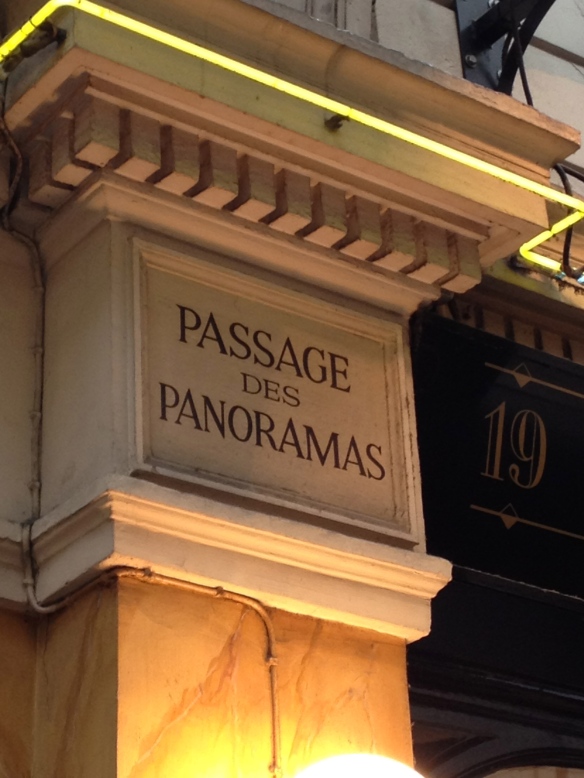
You can still walk through the Passage des Panoramas in the 2nd arrondissement of Paris, the location of one of Académie Julien’s atelier for women.
In March of 1888, two months into her Paris art studies, Beaux realized that she had missed the deadline to submit a painting to the spring Salon. She still hoped for an opportunity to compete at a school show, so she decided to enter a concours against the students in The Passages atelier. Her competition included the Californian Anna Klumpke, who had been studying at The Passages for years and who knew it was faster and easier to pull off a competitive piece in pastel rather than oil. Beaux, on the other, hand, attempted a large oil canvas and in her own words, it was a “nasty failure.” (No images of this painting remain.) Beaux didn’t even receive an honorable mention. For a woman who’d already had a painting accepted in the Paris Salon? Ouch.
Beaux knew she needed to do something more in order to benefit from her time in Paris. The Académie Julien wasn’t going to change her life. But what could?
Beaux was drawn to visit the Louvre, where she admired the Old Masters and Greek and Roman sculpture. One of her favorite things to do was to visit the drawing gallery early on Saturday mornings, before it opened to the public, and copy from the drawings of Raphael.
Like most visiting Americans, Beaux made time to socialize with other Paris artists. Her aunt, Sarah Leavitt Austin, lived in Paris and studied with John Singer Sargent’s teacher, Carolus-Duran. Beaux’s Philadelphia art school friend, Florence Esté, enjoyed a nice little apartment and studio across the street from Luxembourg Gardens, near the heart of the art community on rue Notre Dame des Champs. Esté introduced Beaux to the prominent Philadelphia artists Alexander Harrison and Charles Lasar, both of whom had graduated from L’`Ecole des Beaux-Arts and had settled in Paris.
Beaux fully expected to befriend and network with fellow artists Harrison and Lasar. They were all from Philadelphia, they’d each studied at the Pennsylvania Academy of the Arts, and they were all in their mid-30s. They’d all had paintings accepted into the Paris Salon, and were about to exhibit their work together at the Pennsylvania Academy’s Annual Exhibition. The big difference was that Harrison and Lasar had studied at L’`Ecole des Beaux Arts. And of course they were men. Harrison gave Beaux the cold shoulder the first time they met, putting her in the category of all of the other “American girls” who were mere amateurs at art.
That first spring of 1888 Beaux would attend her first Paris Salon, but it left her feeling discouraged. Although she was familiar the famous artists’ names on the plaques, she didn’t recognize them when she saw them in person. She remained an outsider, looking in: “The world of Art in Paris was in no wise opened to me, and in fact was too far out of sight to even be longed for.”
And then came the summer that changed everything. And it wasn’t it Paris at all.
When the Académie Julien closed for the summer, all of the artists of Paris deserted the city for visits to the countryside. Some left for the art colony in Giverny, while others heading south of Paris to the artistic villages near Fontainebleau like Barbizon or Grez. (Read my prior post, Visit an Art Colony in France: Grez-sur-Loing). Beaux’s friend Lucy Scarborough Conant, a fellow American artist, was planning to spend the summer in Brittany with her mother. The Conants invited Beaux and her cousin May to join them in the artistic village of Concarneau.

The seaside village of Concarneau today

Concarneau then: Alexander Harrison, Haunt of the Artists (no date), Pen and ink.
Beaux discovered that the same male artists who had snubbed her in Paris were friendlier in the countryside. Alexander Harrison and Charles (“Shorty”) Lasar were in Concarneau that summer too. Away from the gender politics and good-old boy networks of Philadelphia or Paris, they didn’t mind socializing and painting with women artists. They often went out to paint in plein air as a mixed group.
Beaux started turning out lighter, looser canvases, learning to play with rich outdoor color, bigger brushstrokes and bolder cropping.
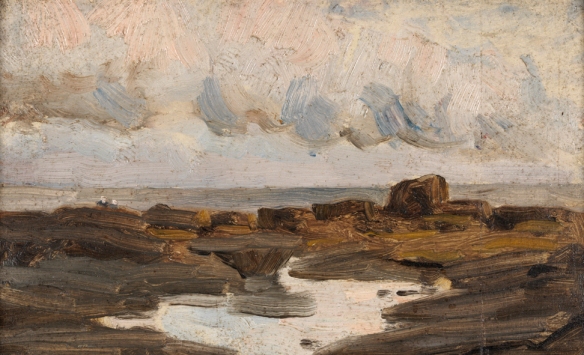
Cecelia Beaux, Seaside Inlet, (1888), oil on cardboard, Pennsylvania Academy of the Fine Arts

Cecilia Beaux, A Country Woman, Concarneau, France (1888), Oil on canvas, Pennsylvania Academy of the Fine Arts
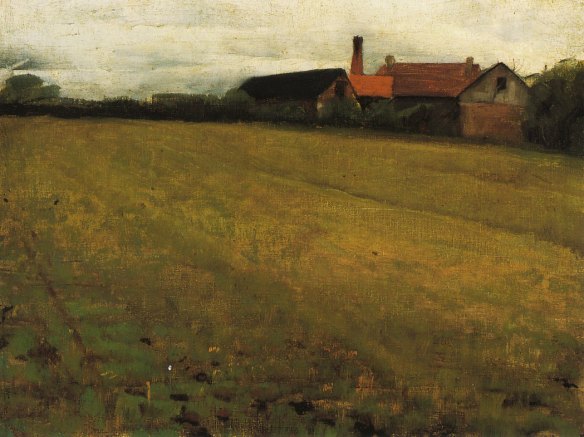
Cecelia Beaux, Landscape with Farm Building (1888), oil on canvas, 11x14in. Pennsylvania Academy of Fine Arts
Beaux was now welcome in Harrison and Lasar’s studios, and they began to visit hers as well. They soon became her friends and mentors.
You can watch Beaux’s transformation take place in the course of one painting. She decided to paint two Breton women in their traditional collars and coiffes. Following Harrison’s example, she started with several preparatory oil sketches. It was the only way to capture the fleeting, blending colors of twilight, (as Beaux herself said) “the tones of coiffe and col mingling with the pale blue, rose and celadon of the evening sky.”
It seems that it was right then and there that Cecilia Beaux learned about color and light. That white is never white, and that surfaces absorb and reflect the light around them. That a change in color and light can create your form.
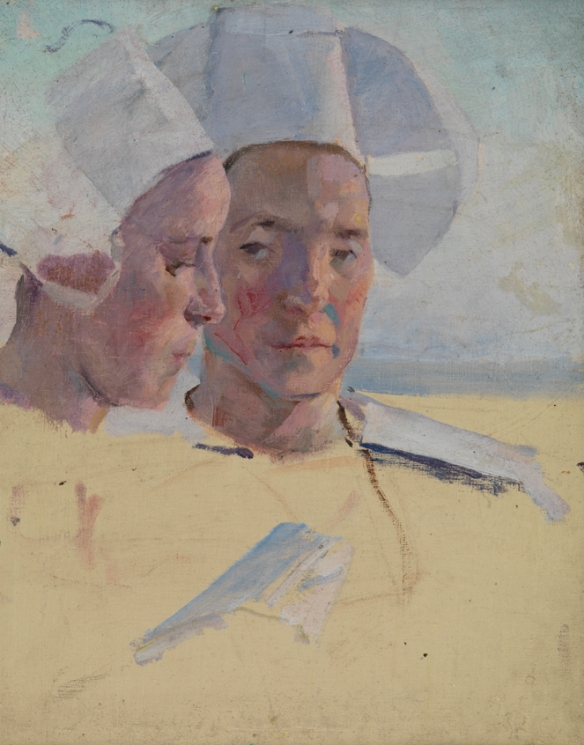
Cecelia Beaux, Study of Two Breton Women, Concarneau, France (1888), Oil on canvas, Pennsylvania Academy of the Fine Arts
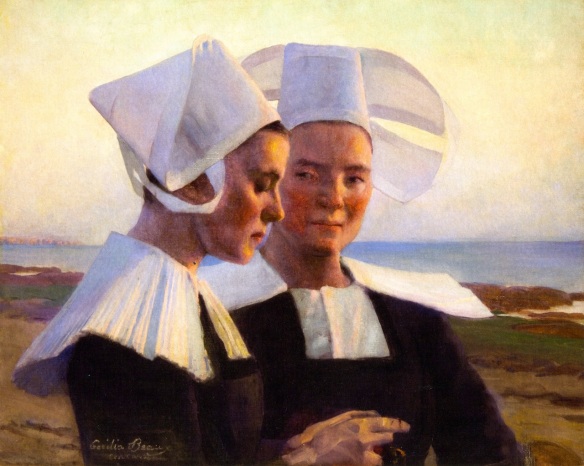
Cecelia Beaux, Twilight Confidences (1888), oil on canvas, Private collection
Harrison and Lasar began to believe in Beaux and urged her to continue her art studies in Paris if she truly wanted to “clinch it.” Their support was important. Beaux had proven she was no amateur and that she deserved to be taken seriously.
Beaux’s summer in Concarneau gave her a taste of the power and joy that can be found within a circle of artists who have mutual respect and admiration. She finally found encouragement, affirmation, criticism and collegiality among her peers. And refreshingly, there is no evidence of any romantic entanglements in the group that could have complicated or compromised their professional relationship. In fact, Beaux rejected the proposal of an American suitor that summer, believing she couldn’t combine her promising career with marriage.
Urged on by Harrison and Lasar, Beaux wrote to her uncle and talked him into financing another season of art studies in Paris for the winter of 1889.
I believe it was the turning point of her life. And maybe it wasn’t the power of Paris at all, but rather, the the power of a summer outside of Paris. And now, her palette is now in the Archives of American Art at the Smithsonian.
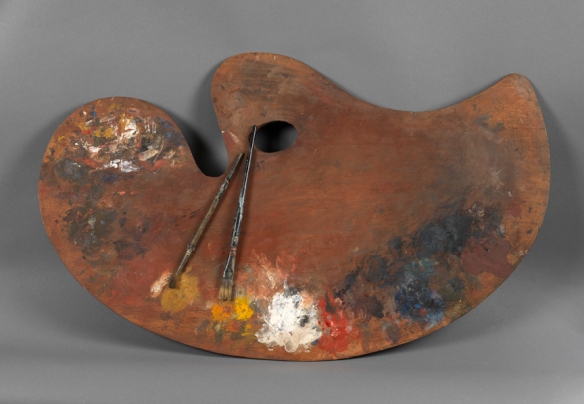
Cecelia Beaux, Palette and 2 Brushes, Pennsylvania Academy of the Fine Arts
48.870899
2.341631











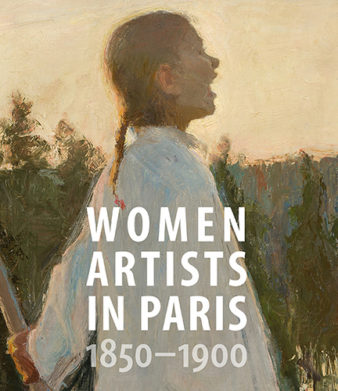














You must be logged in to post a comment.